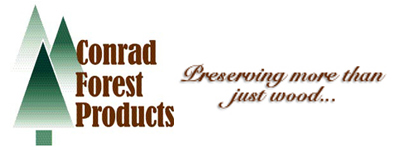Environmental Impact of Preserved Wood

Treated wood is an environmentally responsible choice for exposed construction.
- Wood is a renewable material.
- It requires less energy to produce than alternative building products.
- Pressure treating extends the life of this resource; according to an estimate by the Southern Forest Products Association, pressure treatment saves 226,000,000 trees each year in the US alone.
- Treated wood is produced using plentiful, fast-growing trees grown primarily in managed timberlands (not in ancient forests or unregulated tropical rain forests).
- Like all wood, treated wood provides good insulation against noise, temperature, and electricity.
- Wood construction often allows the use of lower impact installation equipment than does construction with heavier building products.
Treated wood has another meritorious feature: it is frequently used in projects that protect habitats and enable people to gain greater appreciation of nature. These projects include walkways, dune crossovers, camping and viewing platforms, bird feeders, trail bridges, planter boxes, fencing, and nest sites, among others.
